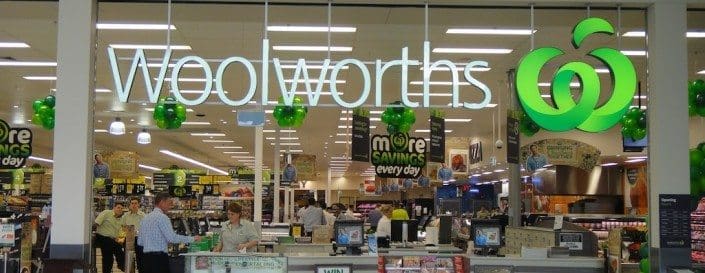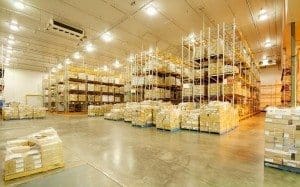
WOOLWORTHS has reported a full-year loss of $1.235 billion across its retail business portfolio – the company’s first loss in 23 years trading as a publicly-listed entity.
The results announced this morning included a 40.8 percent decline in underlying earnings from its Australian food and petrol business.
The supermarket giant’s net profit for the year ended June 26 slipped from last year’s $2.146 billion profit, as it took $2.628 billion of write-downs mostly related to its ongoing exit from the Masters Hardware business and its underperforming Big W stores.
But pre-tax earnings from the core Australian food and petrol business also dropped to $1.76 billion, from $2.97 billion the year before, due to lower retail prices and a decline in items per basket.
Group chief executive Brad Banducci described last financial year as a year of unprecedented change for Woolworths.
“The decisions we have taken and investments we have made have had a material impact on our FY16 results but have been necessary to begin the rebuilding of Woolworths,” he said.
“We are seeing early signs of progress as we work to restore our competitiveness and improve our culture in Australian Food. Sales improved over the year for our Australian Food business with comparable sales in the fourth quarter the strongest for the year driven by strong comparable transaction growth,” he said.
Woolworths’ comparable sales fell 1.1pc in the final quarter of the year, marking the twenty-eighth straight quarter the nation’s biggest supermarket retailer has been beaten by Coles.
As reported earlier on Beef Central, retail surveys conducted by Nielsen Homescan have indicated that major rival Coles has now gone past Woolworths as the nation’s largest beef retailer, by volume.
“While we are seeing early signs of momentum, we are not underestimating the size of the task that lies ahead, especially given the highly competitive nature of the markets in which we operate. As we have consistently said, this is a three to five year journey,” Mr Banducci said.
Underlying earnings from Australian Food & Petrol were down 40.8pc on the previous year, reflecting lower sales growth driven primarily by ‘investment’ in lower retail prices and a decline in items per basket.
Woolworths chairman Gordon Cairns said trading conditions in the coming year would remain “highly competitive”, but the company was encouraged by some early signs of momentum at the end of the FY16.
In the Australian Food (supermarkets) division, sales for the year were $34.8 billion, a decrease of 0.2pc on the previous year. Comparable sales declined by 1.3pc for the year, primarily driven by significant ‘price investment.’
Availability of fresh foods, and Fruit & Veg were areas which had seen some recent improvements, but remained the biggest opportunities, Mr Banducci said.
“In FY16, we invested over $500 million in lowering prices or not passing through cost price increases to our customers compared to FY15 despite the significant price investment that had already taken place the previous year.”
Mr Banducci said Woolworths aimed to become a ‘lean retailer’, through end-to-end processes and systems excellence, including a faster fresh meat processing model and better on-shelf availability.
The company recently announced the cutting of 500 jobs and closure of 17 less profitable stores, and a less ambitious new store development target.
Centralised packaging model questioned

Cold storage in the new Woolworths Lavereton facility
In the fresh meat operations, questions continue to be asked about the success of Woolworths’ alignment with UK further-processor, Hilton Food Group in the centralised meat preparation and packaging model, with two enormous facilities now established near Melbourne and Perth.
The Woolworths Food Group joint venture launched a new $150 million meat processing facility at Laverton outside Melbourne last October, but reports continue to circulate about retail outlets running out of fresh meat products, as supply lines run thin.
The long distances between stores in Australia has been offered as a reason why Hilton Food Group’s successful European model may have struggled to translate into the Australian market setting, onlookers suggest.



HAVE YOUR SAY